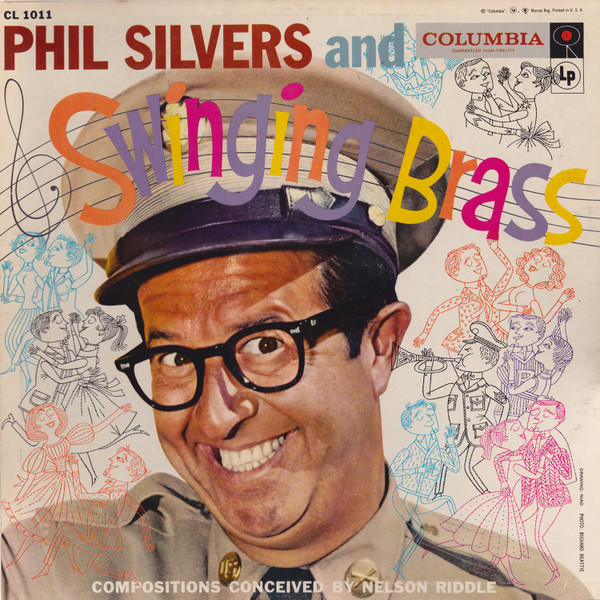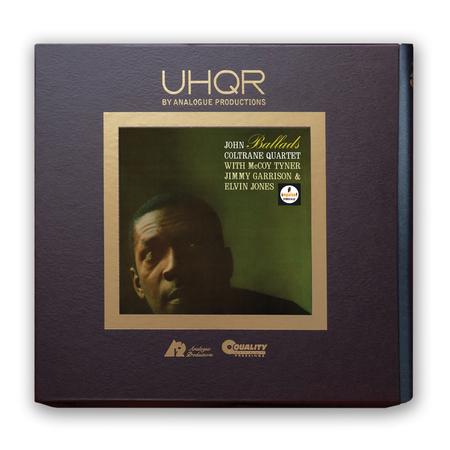A UHQR "Ballads" Joins the Catalogue
squeezing from the tapes every last drop of sonic goodness
If the task is to compare five releases of an album, which it is here, at least it should be an album worth repeated listenings, and of course Ballads is, though it's not up there with Coltrane's greatest recorded achievements. It can't be beat as a Coltrane intro record for non-jazz fans who need the melody. For the rest of us, while Coltrane's playing is straight ahead and wonderfully lyrical, McCoy Tyner center stage wraps his fingers around the tunes and kind of steals the improv part of the show.
I dutifully compared this new UHQR with an early pressing (with the second post AM-PAR label, but clearly sourced from the first lacquer with both VAN GELDER and STEREO stamps and hand scribed A32A and A32B) with: the Speakers Corner 2003 release mastered on lathe 320:
which at the time was located at the Emil Berliner Studios in Hannover, Germany:
and with the 2009 ORG double 45 cut by Bernie Grundman and pressed at Pallas, and with the more recent 33 1/3 Verve/Acoustic Sounds reissue also cut by Ryan Smith, for a total of five.
First, if you buy this UHQR as your first version of Ballads, which would be a good idea if the money isn't a problem and you have the shelf space, you'll note that Rudy Van Gelder's recording of Elvin Jones's drum kit on the opening track "Say It (Over and Over Again)" is not exactly "immediate and present" as it was on later Van Gelder productions, I'm thinking of Larry Young's 1966 Blue Note release Unity four year later, which, on the opening title tune features a spectacular knock you on your tail recording of Elvin's kit.
Here the drum sound on the opener is notably distant and almost hushed. Rest assured it's not because the tape is "beat" or that the high frequencies have been lost. The early pressing and all of the others feature a similar opening tune drum sound. That's how it was recorded. Why is that? Who knows? Rudy had been in the new studio for three and a half years when he recorded the opening track November 13, 1962 so it wasn't that. Perhaps he wanted to differentiate his Blue Note "sound" from what he did for Impulse. Or maybe producer Bob Thiele directed it to sound this way to spotlight Coltrane and to keep the usually ebullient Jones on a low simmer. Who knows? Don't let it bother you.
Later, on side two (of the four) when Tyner solos on "Too Young To Go Steady" Elvin hits the skins with added vigor, but just for a short period of time. Even when he does though, brush transients are on the soft side. Coltrane is the star of the show mix-wise, but the ear gravitates to Tyner appropriately center stage—at least my ear does.
Coltrane's closely miked sax sounds vividly present, a bit more so on this UHQR compared to the others, and Tyner's piano, while not brilliantly recorded (n the RVG style) sounds a bit more solid and grounded in space on the UHQR compared to RKS's 33 1/3 cut.
All of these editions are very good—even the Speakers Corner release obviously cut from a production copy then stored in the Hanover, Germany Universal tape archives and now in Berlin (the others were cut using the master tapes). It's a bit flatter spatially and not quite as "present". Bernie's 45 ORG cut is, as you'd expect, very good.
The only one still in print though, aside from this UHQR is the 33 1/3 also cut by Ryan Smith. So, is it worth spending the extra money for the UHQR? That's your call! But this sounds somewhat better in the ways 45s sound better than 33 1/3s (all else being equal as it is here), plus the flat profile pressing and ultra-quiet vinyl compound are the sonic cherry on top that let you see further into the soundstage where you can more clearly hear the recording space, speaking of which, can be seen in the swell Jim Marshall photos found in the booklet along with Ashley Kahn's usual astute and informative annotation. The double truck one that hits you upon opening the booklet is especially eye popping and wonderful, though it's clearly posed. A later one shows the group as recorded with microphones in place.
Kahn goes through the tunes—all standards—noting each one's history. The opener was written for "Buck Benny Rides Again", a 1940 Jack Benny Western comedy. I'm thinking "I bet a large percent of younger buyers reading this won't know who Jack Benny even is!" Another is from an Abbott & Costello comedy and yet another is from a Bing Crosby-W.C. Fields comedy and I'm thinking the same thing! It's also ironic so many of the tunes came from movie comedies when there's very little humor and generous amounts of melodic beauty.
Some of the others like "What's New?" will be better known and then Kahn slips in almost easy to miss that Reggie Workman, Garrison's predecessor in the group, is the uncredited bassist on "It's Easy to Remember", which makes sense since it was the first tune recorded for the album, December, 21st, 1961.
Kahn notes that the final tune "Nancy (With the Laughing Face) was co-written by Phil Silvers! Again, I'm thinking that name will pass by most younger buyers but the older ones know Phil as Sgt. Ernest G. Bilko on the 50's era ('55-'59) television sitcom "You'll Never Get Rich". Silvers'character was the opposite of "earnest". Silvers also was a musician though most Boomers didn't know that!

As Kahn points out in the notes, Coltrane's playing is "to the point"—almost as if to counter the backlash to his more "out there" playing but when you're a target, you're a target. The Downbeat review by John S. Wilson (reproduced in the booklet) is pretty slashing. Nat Hentoff's in the May edition of HiFi/Stereo Review, was more appreciative.
Interestingly, Kahn also notes that mastering engineer Smith initially was a saxophonist before switching to his current gig and he spoke with and quotes him in these notes. Smith found that Jones's riveted ride cymbal was "really aggressive" on a few tracks as if something had gone wrong with the microphone and needed to be filtered.
I found that fascinating so I went back and listened again to the original record and to Smith's cut and I have to conclude that Rudy heard the same thing when he mastered because the drum kit sound is similarly "filtered" on both—at least nothing sizzly pops out on the original, but the vinyl, while relatively quiet doesn't begin to compare to the UHQR's black backgrounds that put the music in bold relief.
Kahn devotes the annotation's final paragraph to producer Bob Thiele's reaction to the negative reviews. In a 1968 interview with Frank Kofsky, Thiele says "I think that [Coltrane] was less affected by the reviews than I was....in those days, what Down Beat said....wrongly affected record people, and now I find that most of the things they said at the time, and even the things they say now, amount to nothing."
if you think that sounds bitter, I wish I could publish here a hand-written response Thiele sent to "Tone Poet" Joe Harley who wrote in 1991 to complain about the production and compression in one of Thiele's later recordings. Well, I'll quote one line in the response: "Who gives a shit if you like one of my productions?" At least the late Mr. Thiele was consistent!
One more box highlight. Analogue Productions managed to procure from the Jim Marshall estate a few outstanding photographs including one of the group playing at the session arrayed close to how the appear on the recorded soundstage, but reversed (Jones is to the left and Coltrane sitting on a stool is on the right). There's also a close up shot of Coltrane blowing, standing in front of the microphone and one of the master tape box. The tape inside was used to produce this record.
Does this edition beat the RKS 33 1/3 edition? Yes. By leaps and bounds? No, but it is better. Is the presentation superior? Yes. By leaps and bounds. As always your call, not mine.












































.png)








